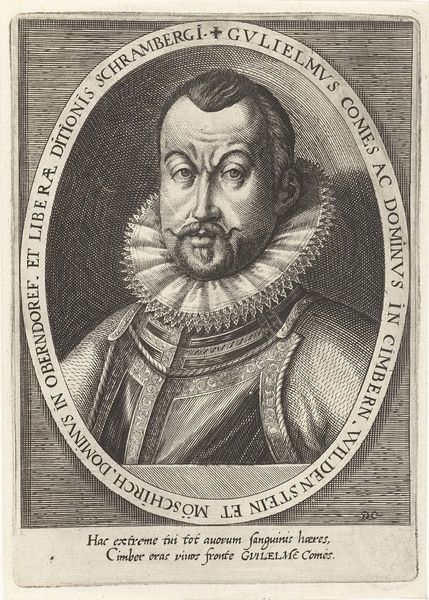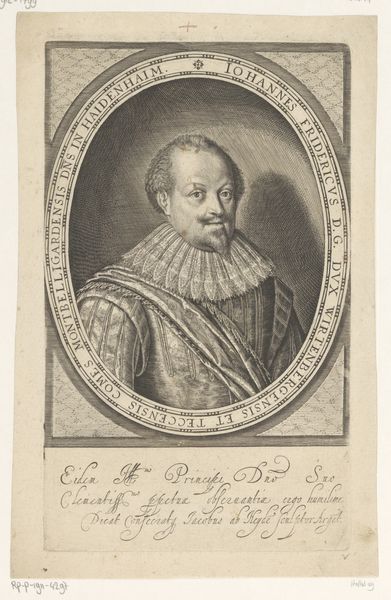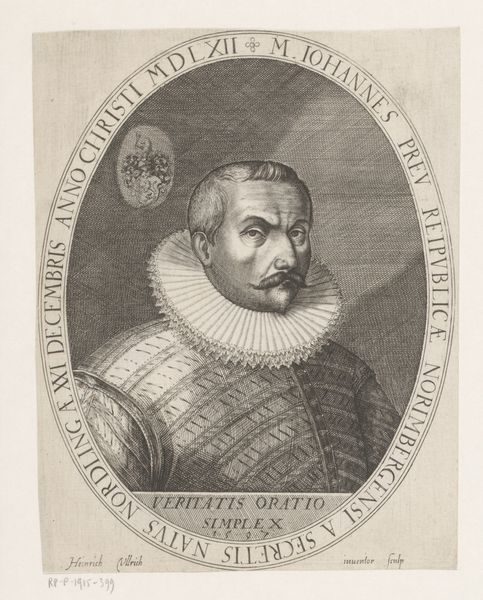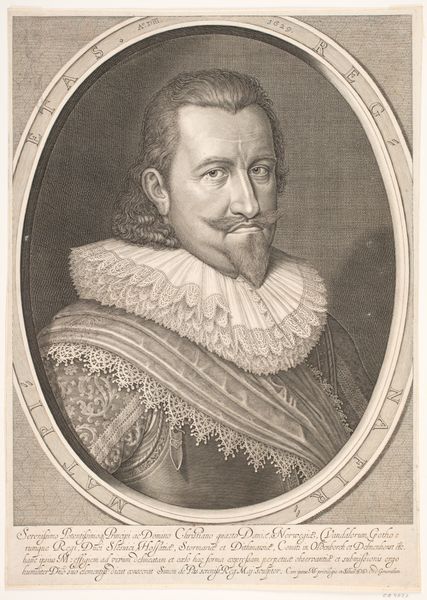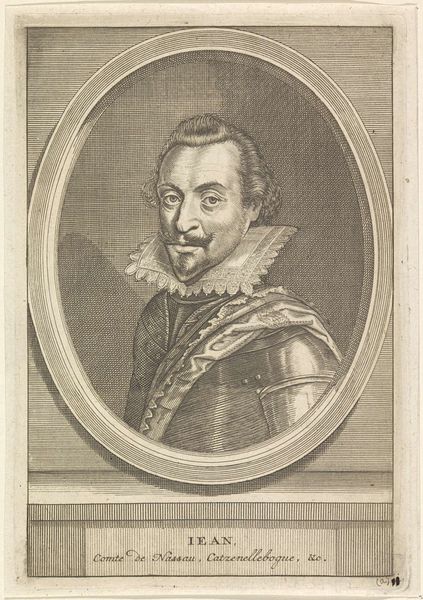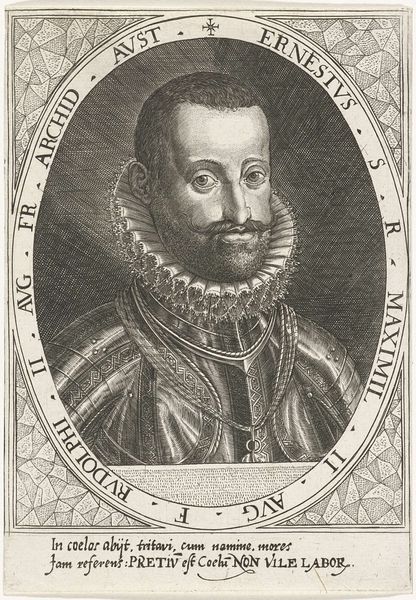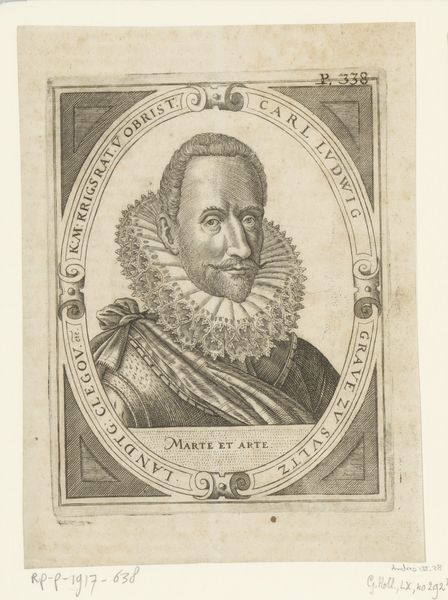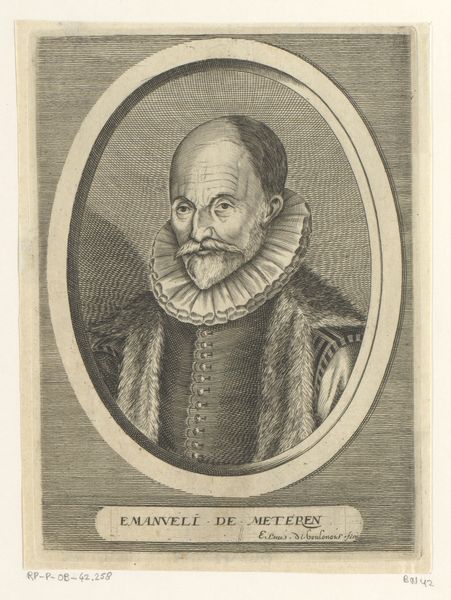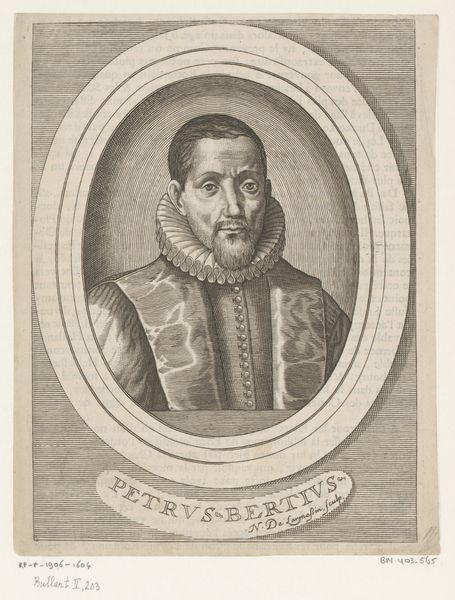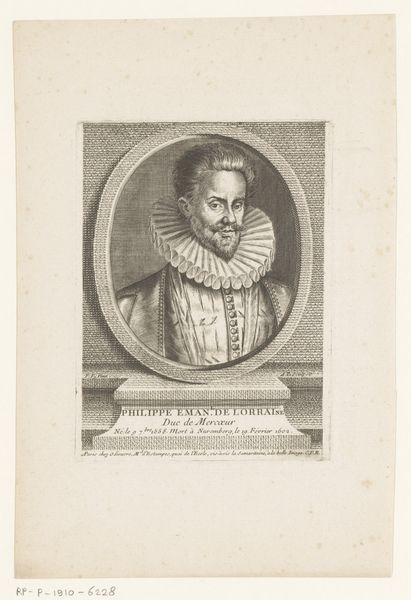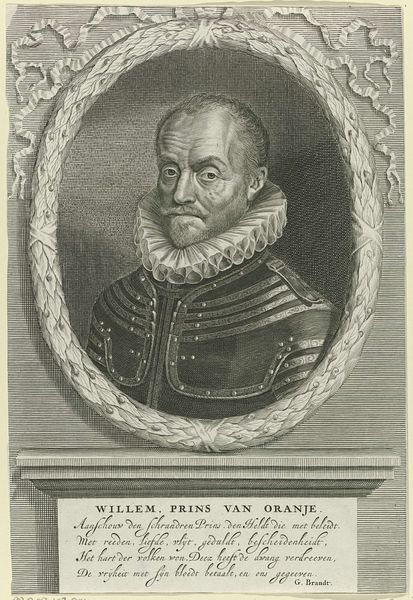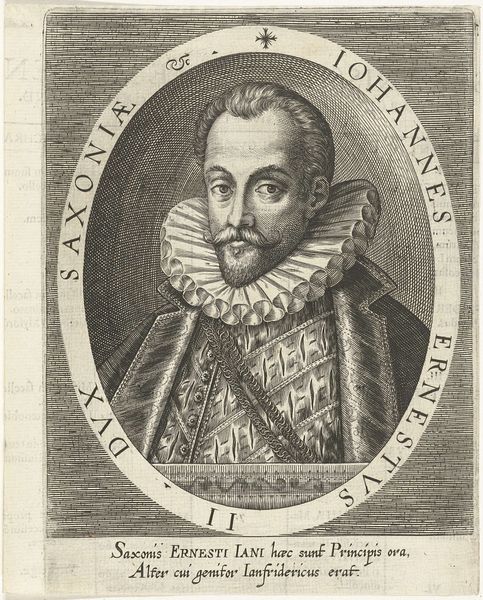
engraving
#
portrait
#
baroque
#
dutch-golden-age
#
old engraving style
#
engraving
#
realism
Dimensions: height 184 mm, width 121 mm
Copyright: Rijks Museum: Open Domain
Curator: The meticulous detail of this engraving really captures something of its historical moment. This is Jacob van der Heyden’s 1628 portrait of Wilhelm von Baden-Baden. It's a masterful example of the Dutch Golden Age style, isn't it? Editor: Yes, it strikes me as austere, but in an intriguing way. There’s an undeniable sense of controlled power, a formality, perhaps even rigidity in his pose and expression. It feels very deliberate. Curator: The subject is certainly presented with deliberate gravity. Wilhelm von Baden-Baden would have been a significant figure in his time, and that status needed to be visually asserted. Notice the details, how his armor conveys strength and his elaborate ruff suggests wealth and sophistication. These are common tropes for displaying power. Editor: And the Latin inscription around the oval… adding to the sense of erudition and established authority. What does it say? Curator: Roughly translated, it celebrates Wilhelm’s majesty and grace, linking him to both peace and war. It's quite interesting how the inscription attempts to paint him as this multi-faceted leader, capable of both. This helps understand what he was aiming to convey. Editor: And it is intriguing. The engraving style itself lends this almost severe feel. It emphasizes line and form so much. But it’s also remarkable how van der Heyden achieves a sense of depth. Those cross-hatched shadows, especially around his eyes, suggest such intensity. Curator: Absolutely, there’s no denying that skill. And portraits were, of course, never purely representational. It’s not just about recording what someone looked like but communicating their importance to contemporaries and future generations. It shows an idealised presentation and legacy management through imagery. Editor: Well, looking at this image makes me ponder the gap between image and reality. Who was this man beyond his carefully constructed presentation? It feels impossible to know definitively, and that itself is a statement on power and control. Curator: Indeed. This engraving serves as a powerful testament to the politics of image-making and the cultural performance of leadership, where the man truly creates the image, so in many ways, the image creates the man. Editor: I am now pondering what that very rigid ruff collar would have felt like pressing against the neck...a visual symbol, perhaps of all the tight expectations involved in wielding power and maintaining image. Thank you for sharing the information.
Comments
No comments
Be the first to comment and join the conversation on the ultimate creative platform.
